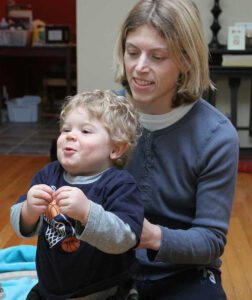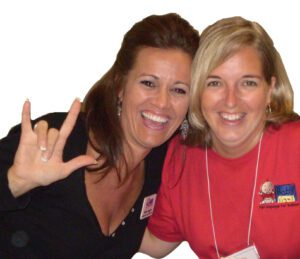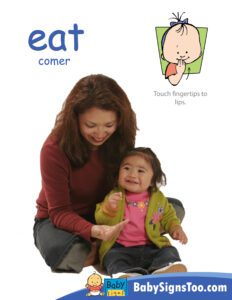
Building Connections: Integrating Baby Signs® into Professional Practice with Infants and Toddlers

In the realm of early intervention, effective communication is the cornerstone of success. For professionals working with infants and toddlers, the Baby Signs® program has emerged as a transformative tool, providing a unique approach to bridge the communication gap before verbal language development. In this blog post, we’ll delve into practical strategies and insights on how speech language pathologists, occupational therapists, social workers, in-home visitors, early interventionists, and other professionals can seamlessly integrate the Baby Signs® program into their practice.

Understanding the Baby Signs® Program:
The Baby Signs® Program is a research-backed program that empowers infants and toddlers to communicate using basic sign language and simple gestures before they can speak. Professionals working in early intervention understand the importance of early communication in the developmental journey of children. Here’s how you can integrate the Baby Signs® program into your practice:
Customized Intervention Plans:
Speech Language Pathologists (SLPs):
– Incorporate Baby Signs® into your therapy sessions to enhance language development. Identify key signs that align with speech goals and integrate them into your interventions.

Occupational Therapists:
– Utilize Baby Signs® to support fine motor skills development. Choose signs that involve hand and finger movements, reinforcing motor coordination while promoting communication.
Social Workers:
– Introduce Baby Signs® as a tool to strengthen the emotional bond between parents and children. Explore signs that express emotions, fostering a supportive environment for social and emotional development.
In-Home Visitors:
– Equip families with practical Baby Signs® resources during home visits. Demonstrate the integration of signs into daily routines, making communication an integral part of the home environment.
Early Interventionists:
– Tailor Baby Signs® plans to meet the unique needs of each child and family. Integrate signs seamlessly into early intervention programs, ensuring continuity of care.
Educational Workshops:
Host a Parent Workshop:
Collaborate with a local certified Baby Signs® instructor to conduct a workshop for parents. This interactive session can empower parents with the knowledge and skills to incorporate Baby Signs® into their daily routines. Find an Instructor here.

Training and Certification Opportunities:
Consider becoming a certified Baby Signs® instructor yourself. Certification programs offer in-depth training, equipping professionals with the expertise to effectively teach Baby Signs® to parents and caregivers. This not only enhances your skill set but also positions you as a leader in early communication strategies.
Incorporating Baby Signs® into Routine Practices:
Interactive Activities:
– Integrate Baby Signs® into interactive activities such as storytelling, play sessions, and circle time. This creates a dynamic and engaging environment for children to learn and communicate.
Visual Aids:
– Use visual aids, posters, or digital resources displaying common signs in therapy spaces. This reinforces learning and serves as a constant reminder for both professionals and families.
Building a Supportive Environment:
Encouraging Consistency:
– Emphasize the importance of consistency in using basic sign language. Encourage parents and caregivers to integrate signs into daily routines, creating a supportive environment for consistent communication.
Conclusion:
Integrating the Baby Signs® program into professional practice is a dynamic and rewarding journey. By customizing intervention plans, conducting educational workshops, incorporating signs into routine practices, and building a supportive environment, professionals can empower both themselves and the families they work with. As we embrace the power of early communication through Baby Signs®, we pave the way for stronger connections and positive developmental outcomes for the infants and toddlers entrusted to our care.
Visit our website, BabySigns.com to learn more about the Baby Signs® Instructor Program or email info@babysigns.com.

